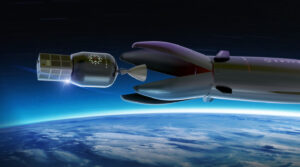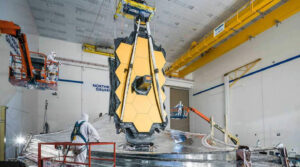NASA lost contact with Mars helicopter Ingenuity for 15 breathless minutes

NASA lost contact with Mars helicopter Ingenuity for 15 breathless minutes
NASA directed the seventeenth trip for the Ingenuity Mars Helicopter on Sunday, December 5. Everything went as arranged during the helicopter’s 614-foot cross toward the upper east. Nonetheless, during the last drop period of the flight, the correspondences connect among Ingenuity and the Perseverance Mars wanderer was disturbed. It seems the helicopter had the option to land effectively. Around 15 minutes later the radio connection was lost, Perseverance got parcels of Ingenuity telemetry showing the battery and flight gadgets were solid.
NASA accepts the deficiency of the radio connection was expected to a “testing radio design” among Perseverance and Ingenuity during the helicopter’s arrival. Telemetry information NASA from the flight showed that the vehicle proceeded true to form during the 117-second trip at a height of 33 feet over the outer layer of Mars. Be that as it may, telemetry information is absent for about 33% of the last plummet from a height of around 10 feet over the Martian surface.
NASA said before it very well may be certain precisely what ended up causing the deficiency of radio connection, it needed to move the missing information from Flight 17 from the helicopter to Perseverance and afterward to Earth. NASA had the option to transfer that information to Earth on Wednesday of this current week, and the information shows that power on board the helicopter is phenomenal. The degree of force being moved from the sunlight powered chargers to the six lithium-particle batteries inside the helicopter is sufficient that NASA accepts the helicopter is in an upstanding position.
NASA realized Ingenuity would confront difficulties with the rough climate where it’s as of now working. The helicopter has worked far past its unique mission course of events, and it was initially intended to work on level land. At present, it is working in a space with critical height changes that posture difficulties not exclusively to the flight programming however to the radio transmission connect among Ingenuity and Perseverance.
The strength of a radio transmission relies a great deal upon having a reasonable view between the sending and getting recieving wires. In rough landscape, the view could be deterred by enormous shakes, slopes, or edges. Correspondences can likewise be impeded assuming Perseverance is adjusted so its recipient faces from the helicopter. Interchanges difficulties during this flight incorporate an arrival site that put a slope called Bras between the helicopter and the wanderer. The slope is just 13-feet tall, however that demonstrated enough to hamper correspondences.
At the point when Flight 17 was arranged, regulators accepted Perseverance would be stopped in a particular area, confronting a particular heading. Notwithstanding, plans for Perseverance change everyday, and when Flight 17 occurred, the meanderer was stopped in an alternate area. The meanderer’s area set it at a difficult heading for radio correspondences with Ingenuity.
The plan groups behind Ingenuity constructed the helicopter to deal with this kind of issue. The helicopter was intended to shut down later flight and sit tight for additional directions consequently. NASA says it accepts the flight was a finished achievement noticing that telemetry was ostensible paving the way to the second radio correspondences were lost. A fruitful landing is additionally upheld by the information parcels got 15 minutes later Ingenuity should have landed.
Among the information in those parcels was battery voltage is showing +76 millivolts, which is a positive 1.2 percent condition of charge increment north of 15 minutes. That information shows that the sun powered chargers were charging the battery, and NASA says the undeniable degree of charging is just conceivable assuming the vehicle was upstanding with its sun based cluster pointed at the sky.







